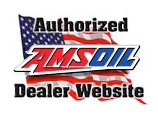08 Jul Zero-Turn Mower Maintenance
Zero-turn mowers have been a staple for landscape professionals for years and are popular among homeowners with large lawns. These machines are controlled by a series of belts, pulleys and hydraulic controls that are user operated by control levers.
Advantages
The ability to make sharp turns with swiveling front wheels and independent rear wheels. They are very convenient when mowing around trees and making 90-degree turns, since the user doesn’t have to engage the clutch several times to change directions, saving time and making the job easier. These mowers also cut closely along edges of shrubs, flower beds and other obstacles, decreasing the need for extra trimming.
Zero-Turn Mower maintenance
A properly maintained zero-turn can deliver years of reliability. Here are some tips:
Belts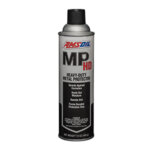
Belts are one of the biggest maintenance concerns. To keep the belts working well, keep the outside of the Zero-turn mowers have been a staple for landscape professionals for years and are popular among homeowners with large lawns. These machines are controlled by a series of belts, pulleys and hydraulic controls that are user operated by control levers. deck clean and periodically clean the underside of the deck of clippings and debris. This will help protect the belts from wear. Coat the deck and blades with Amsoil Heavy-duty metal protector (AMH) to keep water and dirt out.
Grease the Spindles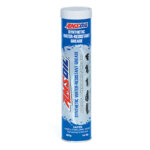
Spindles are another component that need attention. Commercial grade zero-turn mowers often require greasing of the spindles to ensure the blades rotate properly. Amsoil Synthetic Water-Resistant Grease (GWR) protects metal-to metal contact and resists washout in wet conditions, reducing the need for future greasing.
Transmission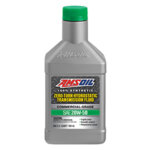
Many zero-turn mowers have hydraulic transmissions that use oil pressure to drive the wheels in different directions and at variable speeds. Heat exposure leads to sludge and varnish formation that degrades performance, resulting in rough operation and poor control that frustrates operators and leads to hydrostatic transmission wear and expensive repairs.
To ensure smooth operation, according to manufacturer recommendations. Amsoil 20W-50 Synthetic Hydrostatic Fluid (AHF) is excellent in these applications.
Change the Oil
Landscape professionals put a lot of hours on their equipment, which requires regular fluid checks to ensure it performs at its best and gets the job done.
When its time to change the oil, Amsoil Synthetic Small-Engine Oil (AES, ASE, ASF, SEF) provides the protection equipment needs to keep it running at peak performance. It is recommended to change the oil at the end of season, so the contaminants are flushed from the engine before it is parked.
Storage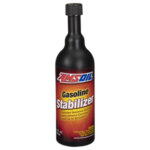
When the season ends, be sure to clean the mower. Add Amsoil Gasoline Stabilizer (AST) to ensure it starts up quickly when removed from storage next season.
